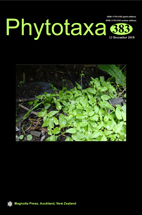Abstract
Molecular dating analysis is an additional set of evidence that can be used to consider the status of taxa, especially at the higher levels (family, order) and is based on the general laws of speciation processes in individual group of organisms. Some families in Pleosporales such as Aquasubmersaceae, Cryptocoryneaceae, and Hermatomycetaceae, have recently been introduced using phylogenetic evidence. In this study, we test the status of Aquasubmersaceae, Cryptocoryneaceae and Hermatomycetaceae using molecular dating. Phylogenetic analyses of 106 sequences (ITS, LSU, rpb2, SSU and tef1 regions) from species of Lophiotremataceae and their relatives were used in this study. Molecular dating analysis was applied to the same data set. The phylogenetic results and molecular dating analysis indicate that the familial status of Amniculicolaceae, Anteagloniaceae, Aquasubmersaceae, Cryptocoryneaceae, Hermatomycetaceae, Lophiotremataceae, Pseudoastrosphaeriellaceae, Testudinaceae and Tetraplosphaeriaceae are well-supported. In the molecular dating they have stem ages of over 50 MYA. A discussion of the familial status of these families is provided. Additionally, Pseudolophiotremataceae fam. nov. is introduced in this paper to accommodate Pseudolophiotrema which has a stem age of 95 MYA.

